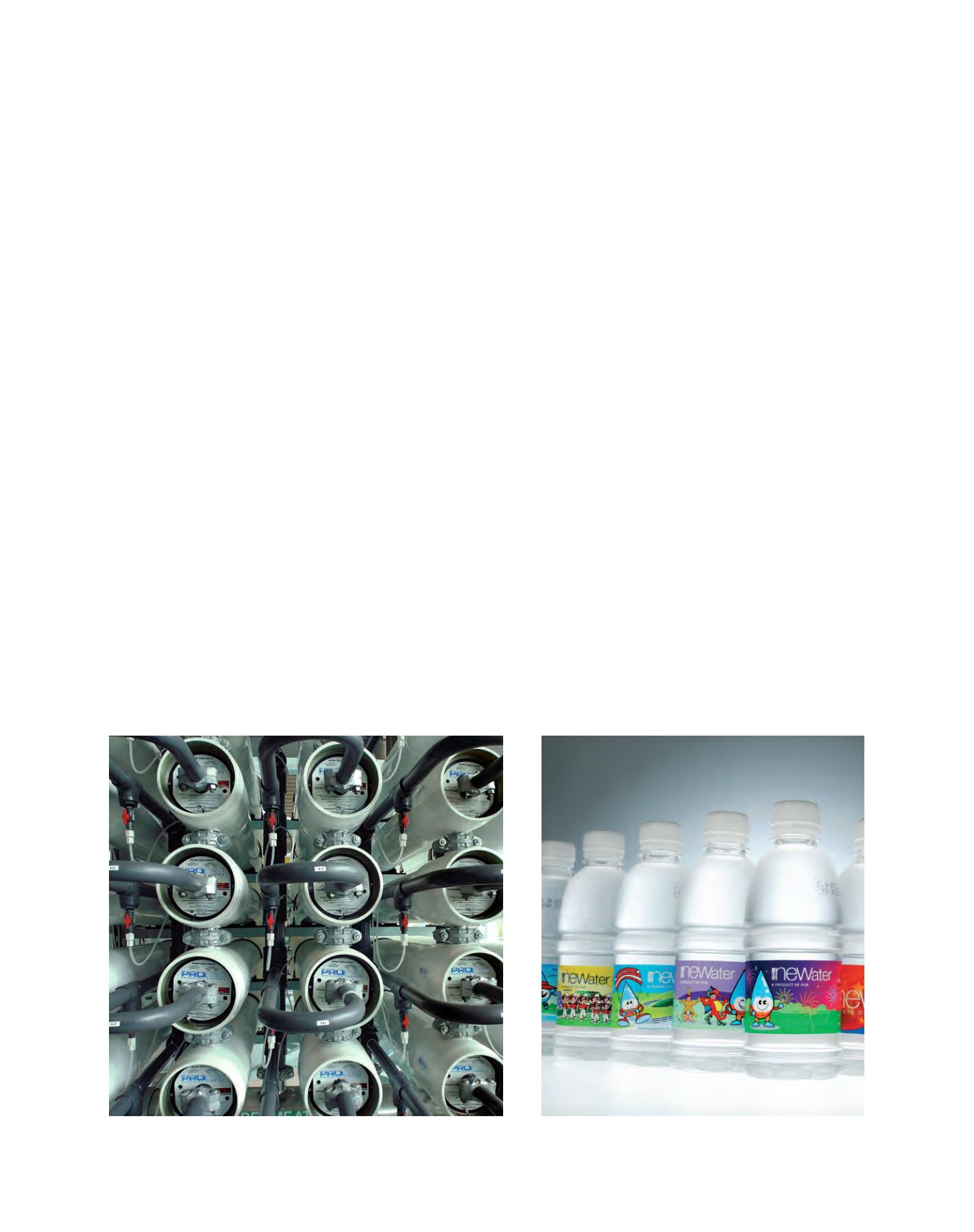

[
] 244
A
daptation
and
M
itigation
S
trategies
results in another drop at a multiplier of two. At higher
recycling rates, a higher multiplier effect could be
achieved. Instead of building all new capacity through
catchment expansion or costly desalination, 50 per cent
of it can be made up through recycling.
Both desalination and NEWater have important roles
to play to mitigate climate change. Both also have the
advantage of being independent of rainfall fluctuations,
thus increasing resilience against variation. Together, they
have put Singapore in a strong position to meet long-term
sustainability and the uncertainties of climate change.
Conserve, Value, Enjoy
Reducing demand is another key strategy. PUB recog-
nizes that simply encouraging the public to conserve
water is not enough – a holistic approach is required.
PUB has a network management plan to ensure
that leaks are minimized, thus reducing unaccounted
for water. The use of good quality pipes and fittings,
efficient management, active leakage controls, manda-
tory and accurate metering and strict legislation on
illegal draw-offs has reduced losses from 10 per cent
in the early 1990s to less than 5 per cent today. The
network has less than seven leaks per 100 kilometres
annually, a vast improvement from the 1980s, when
there were more than 100 per 100 kilometres. This has
been achieved by using good pipe materials, system-
atically replacing old pipelines and the active detection
of underground leaks. By reducing losses and keeping
them in check, there is less pressure to expand sources.
PUB has also addressed the issue of water pricing. A
Water Conservation Tax (WCT) is imposed on every
drop of potable water supplied. This is applicable to
all users, both domestic and non-domestic. The WCT
in 2008, is located right in the heart of the central business district. It
collects runoffs from the largest, most urbanized catchment (10,000
hectares), and increases water catchments to two-thirds of land area.
Singapore imports water from Malaysia through the 1961 and
1962 Water Agreements, until 2011 and 2061 respectively. Water
from local catchments and that imported under these agreements
is sufficient to meet Singapore’s needs. It has, nevertheless, supple-
mented them with NEWater and desalination, ensuring there will be
no need to renew the 1961 Water Agreement by 2011. This ensures
long-term self-sufficiency if necessary. Singapore’s first desalination
plant was commissioned in 2005 to supply 136,000 cubic metres per
day of desalinated water for 20 years.
NEWater is the jewel of Singapore’s diversification strategy. It is
produced through a multi-barrier treatment process that comprises
conventional used water treatment, microfiltration, reverse osmosis
(RO) and finally, ultraviolet disinfection.
To ensure safety, a demonstration plant was opened in 1998 and
operated over two years to test for robustness and reliability, with
more than 20,000 tests carried out for 190 water quality param-
eters. Results showed that quality was well within USEPA and WHO
standards and guidelines. It was also independently verified by an
international and local expert panel. NEWater is now supplied for
non-potable use on a largescale to major industrial complexes,
including wafer fabrication plants, petrochemical complexes,
refineries and power stations. A small percentage is introduced
into reservoirs for indirect potable use. There are now four plants
supplying 15 per cent of demand. When the fifth, and largest plant
is completed in 2010, this will increase to 30 per cent.
Apart from freeing up a large amount of potable water for other
purposes, NEWater has a strategic role in ‘multiplying’ the supply
achieved through recycling. If 50 per cent is recycled supply could
theoretically be doubled. From recycling one drop of water, 0.5
drops could be obtained. This 0.5 can in turn be recycled to get 0.25
and then 0.125 drops, and so on. Theoretically, recycling one drop
Reverse osmosis treatment for NEWater
Bottled NEWater for public education and publicity programmes
Image: PUB
Image: PUB
















